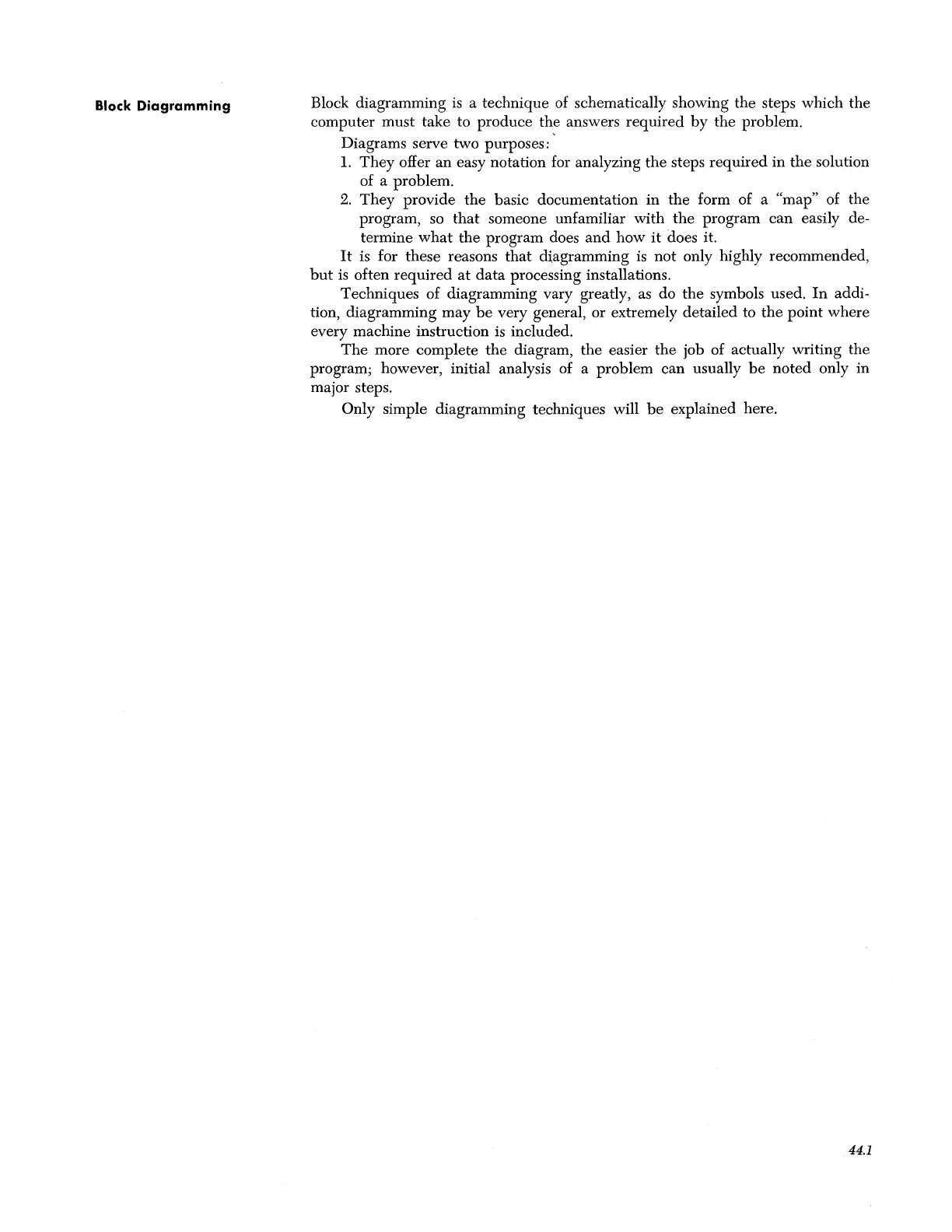Block Diagramming
Block diagramming is a technique of schematically showing
the
steps
which
the
computer
must
take to
produce
th~
answers
required
by
the
problem.
Diagrams serve two purposes:
1.
They
offer
an
easy notation for analyzing
the
steps
required
in
the
solution
of a problem.
2.
They
provide
the
basic documentation
in
the
form of a "map" of the
program, so
that
someone unfamiliar
with
the
program
can
easily de-
termine
what
the
program does
and
how
it
does it.
It
is for these reasons
that
diagramming
is
not
only highly recommended,
but
is
often
required
at
data
processing installations.
Techniques of diagramming vary greatly, as do
the
symbols used.
In
addi-
tion,
diagramming
may
be
very general, or extremely
detailed
to
the
point
where
every machine instruction is included.
The
more
complete
the
diagram,
the
easier
the
job of actually writing
the
program; however, initial analysis of a problem
can
usually
be
noted
only in
major steps.
Only simple diagramming techniques will
be
explained here.
44.1
